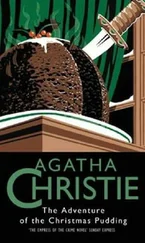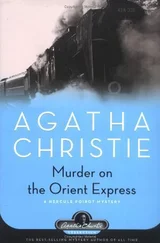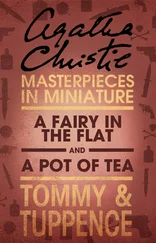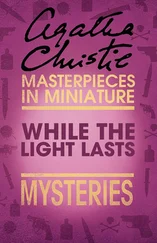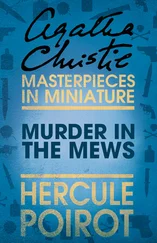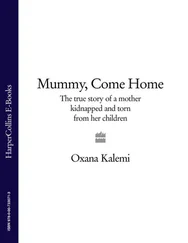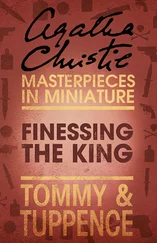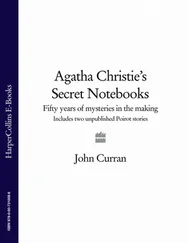If I have omitted text from within extracts I indicate this by the use of dots.
Misspellings have not been corrected but marked as [sic].
Square brackets are used for editorial clarification or remarks.
Dates of publication of works by Christie refer to the UK edition. They have been taken, for the most part, from contemporary catalogues in Collins archives. Traditionally, Crime Club titles were published on the first Monday of the month and in the few instances where actual dates were not available, I have used this guideline. In general, publication dates are included only with the first mention of each title in the Decade introductions. They are not included with later references, unless the timescale is relevant.
At the beginning of each chapter I have included a list of titles whose solutions are revealed within. It proved impossible to discuss a title intelligently, or to compare it to the Notebooks, unless I disclosed some endings. And in many cases the notes mention the vital name or plot device anyway. Christie’s creative ruthlessness in deciding her killer is a vital part of her genius and to try circumventing this with ambiguous verbal gymnastics cannot do her justice.
Since the publication of Agatha Christie’s Secret Notebooks I have received many enquiries regarding access to the Notebooks. Although it is not possible for the public to read the Notebooks, two of them are on public display in Devon, England. One can be seen in Torquay Museum and a second in Paignton Library and Information Centre.
The quotations at the beginning of each chapter are from Agatha Christie’s Autobiography.
In Agatha Christie’s Secret Notebooks my aim was to examine how a unique body of work, produced over a 50-year period, came into being. I analysed the creative process of the Queen of Crime and showed how the chaotic scribbles in a copybook were transformed into a body of detective fiction that set the standard for the time and, as it transpired, for all time. A brief resumé at this point will aid an understanding of later chapters.
In February 1955, on the BBC radio programme Close-Up, Agatha Christie admitted, when asked about her process of working, that ‘the disappointing truth is that I haven’t much method’. But although she had no particular method, no definite system, we discover that the apparently indiscriminate jotting and plotting in the Notebooks is her method. This randomness is how she worked, how she created, how she wrote. She thrived mentally on chaos, it stimulated her more than neat order; rigidity stifled her creative process. She used the Notebooks as a combination of sounding board and literary sketchpad where she devised and developed; selected and rejected; sharpened and polished; revisited and recycled.
One system of creation that she used, especially during the prolific years, was the listing of a series of scenes, sketching what she wanted each to include and allocating to each individual scene a number or a letter. She would subsequently reorder those letters to suit the purposes of the plot in a pre-computer version of ‘cut and paste’.
She reused plot devices throughout her career; and she recycled short stories into novellas and novels – she often speculates in the Notebooks about the expansion or adaptation of an earlier title. The Notebooks demonstrate how, even if she discarded an idea for now, she left everything there to be considered again at a later stage. And when she did that, as she wrote in her Autobiography, ‘What it’s all about I can’t remember now; but it often stimulates me.’
Many of Christie’s best plots did not necessarily spring from a single devastating idea. She considered all possibilities when she plotted and did not confine herself to one idea, no matter how good it may have seemed. She rattled off possibilities and variations on the basic idea so that, for instance, in very few cases is the identity of the murderer settled from the start of the plotting. An example from the notes for Mrs McGinty’s Dead, as she considers the possible identity both of the killer from the past and from the present, illustrates this:
1 A. False – elderly Cranes – with daughter (girl – Evelyn) B. Real – Robin – son with mother son
2 A. False Invalid mother (or not invalid) and son B. Real – dull wife of snob A.P. (Carter) Dau[ghter]
3 A. False artistic woman with son B. Real middle-aged wife – dull couple – or flashy Carters (daughter invalid)
4 A. False widow – soon to marry rich man
5 [A] False man with dogs – stepson – different name [B] Real – invalid mother and daughter – dau[ghter] does it
Throughout the Notebooks murder methods, motives, settings and even the detective are apt to change between the early notes and the published book; names, in particular, change, sometimes radically. I try, where possible, to identify which character Christie may have had in mind when this occurs.
In Agatha Christie’s Secret Notebooks I examined over 25 novels, almost a dozen short stories and the genesis of all 13 of The Labours of Hercules; I also included some stage scripts and presented two ‘new’ Hercule Poirot investigations. Agatha Christie’s Murder in the Making includes the rest of her novels, as well as an ‘unknown’ stage script. And, unlike Agatha Christie’s Secret Notebooks, this new volume contains some more personal glimpses – her reading lists, her own account of the creation of Hercule Poirot, a fascinating letter to The Times. As well as a new version of a Miss Marple short story I also include, from either end of her career, the original denouement of The Mysterious Affair at Styles and her notes for a final, unwritten novel.
If any further proof were needed of the universal and timeless appeal of Agatha Christie, the appearance of Agatha Christie’s Secret Notebooks provided it. Since its appearance I have received correspondence from Christie devotees the world over: from Australia, Russia, Croatia, Brazil, Argentina and Italy as well as the UK, the USA and Ireland; I have been interviewed for magazines, radio and TV in France, Portugal, Turkey, the USA, Iceland, Finland, Spain and Brazil as well as the UK and Ireland; I have been invited to Tokyo, Helsinki, Istanbul and New York, and to literary festivals throughout the UK and Ireland. And the book itself has been translated into 17 languages including Vietnamese and Croatian.
As a certain Belgian might say, ‘It gives one furiously to think, does it not …?’
Конец ознакомительного фрагмента.
Текст предоставлен ООО «ЛитРес».
Прочитайте эту книгу целиком, купив полную легальную версию на ЛитРес.
Безопасно оплатить книгу можно банковской картой Visa, MasterCard, Maestro, со счета мобильного телефона, с платежного терминала, в салоне МТС или Связной, через PayPal, WebMoney, Яндекс.Деньги, QIWI Кошелек, бонусными картами или другим удобным Вам способом.

